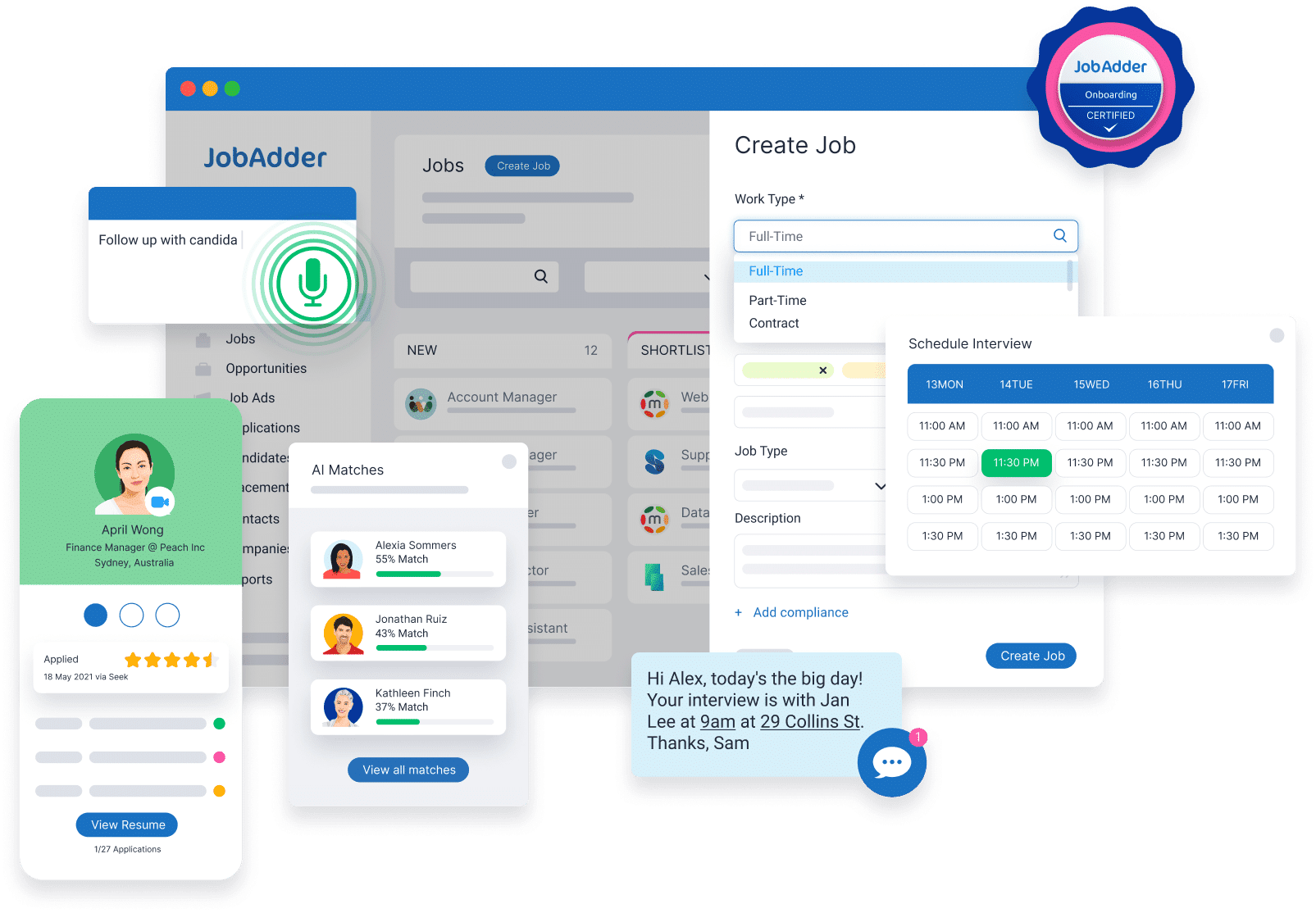Recruiting is hard work. Your recruitment software shouldn’t be.
Don’t waste valuable time and money learning how to use your ATS and CRM. Let JobAdder teach you on the job with in-app training and support so you can learn while you earn.
Simplifying recruitment for Recruitment Agencies and HR and Talent Acquisition teams who want everything in one place.
Without complexity.
Permanent Recruitment
Build relationships with candidates to provide exceptional service to your clients
Temporary Recruitment
Fill temporary and contract roles at speed and at scale from your database
HR and Talent Acquisition
Promote your employer brand with digital tools that attract quality candidates
Recruitment CRM
Grow your database through personal and proactive account management with a Recruitment CRM.
Recruitment Marketing
Attract clients and candidates with the right message at the right time with Recruitment Marketing.
Applicant Tracking
Track job applications and get a complete view of your candidate pipeline with Applicant Tracking.
Placement Management
Place candidates with the right skills in the right job for the right cost with Placement Management.
Recruitment Operations
Discover what’s working and what could be improved in your hiring process with Recruitment Operations.
High user adoption rate = improved recruitment agency performance.
We took a deep dive into user data to understand how high-performing recruitment agencies increased their productivity, growth and ROI after using JobAdder.
The study measured four key success metrics: number of users, number of jobs, placement ratio and time-to-place.
Results were clear: user adoption strongly correlates with high performance.
Are you getting results like this from your ATS and CRM?
Reduced job ad
spend by
65%
Reduced
expenses by
$1.5-$2M
Reduced search
time by
50%
Reduced clicks per
task by
75%
Increased
efficiency by
50%
Reduced time-to-hire
by
50%
“It’s brilliant because the rate at which JobAdder innovates and provides new releases is fantastic.”
Read the story“JobAdder is arguably one of the best for support. I was able to set up a candidate registration form in just a few days, as opposed to a matter of weeks.”
Read the story“We just find, whenever we have a question for JobAdder, the answer’s always, yes, we can do that and this is how we do it. That’s nice as well, always having a solution to our questions and problems.”
Read the story“The interactions with each of the teams at JobAdder from sales to migration to support was first class.”
Read the storySelf-serve learning on demand.
Comprehensive product suite
No gated features
Flexible pricing options
Flexible pricing options to suit any business size.
Let us help you find the right plan for your business.
Join the mailing list to stay up to date with JobAdder
Not quite ready to chat about a new recruitment CRM and ATS? Stay on the down low for now.

